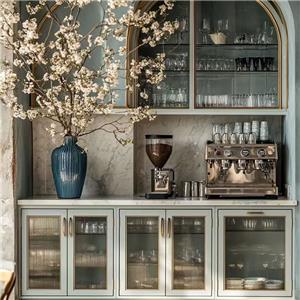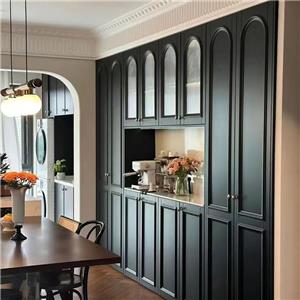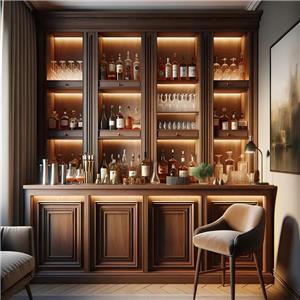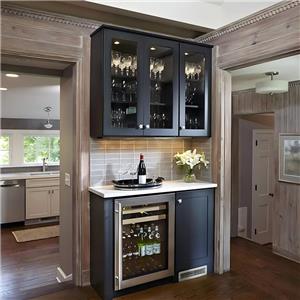What kind of cabinets are considered high-end cabinets?
In modern home decoration, cabinets have become one of the core components of the kitchen. High-end cabinets are not only practical storage spaces, but also a symbol of aesthetics and quality of life. With the improvement of people's living standards, more and more families are pursuing high-end cabinets when decorating their kitchens. However, what kind of cabinets can really be called high-end kitchen cabinets?
This article will analyze the core elements of high-end kitchen cabinets in detail from five perspectives: materials, design, craftsmanship, functionality and user experience, to help consumers better understand and choose high-quality cabinets.
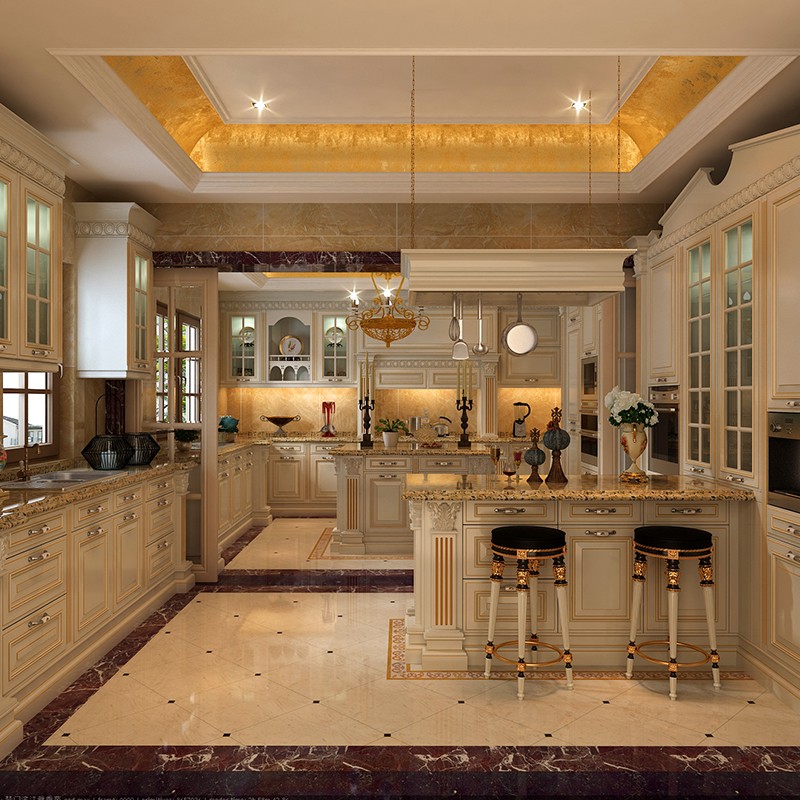
Material: The core foundation of high-end cabinets
The material of the cabinet directly determines its durability, beauty and grade. High-end cabinets usually choose high-quality wood, hardware and countertop materials to ensure the durability and visual high-end feeling of the cabinet.
1. Choice of wood
The door panels and cabinet materials of high-end cabinets are usually made of natural solid wood or high-quality solid wood composite materials. Common high-end woods include oak, cherry, walnut, etc. These woods are hard and have clear textures. After fine processing, they can present a unique texture and natural beauty. In contrast, cheap cabinets are mostly made of density board or particle board. Although these materials are cheaper, they are not as durable and beautiful as solid wood.
In some high-end cabinet designs, environmentally friendly bamboo or treated special wood may also be used. These materials not only have excellent texture, but also reflect the owner's concern for environmental protection and health. In short, the material is the primary criterion for judging whether the cabinet is high-end.
2. Choice of countertop material
The countertops of high-end cabinets are usually made of natural stone (such as marble, granite) or artificial stone (such as quartz), which are not only wear-resistant and heat-resistant, but also have a strong decorative effect. Quartz has become a popular choice for high-end cabinet countertop materials due to its high hardness and strong antibacterial properties. In contrast, ordinary cabinets may use cheap laminates or artificial boards. Although they are cheap, they are easy to scratch and have a short service life.
3. The quality of hardware accessories
Hardware accessories are the "invisible" quality guarantee of cabinets. High-end cabinets will use high-quality hinges, slides, handles and other hardware to ensure the stability and smoothness of the cabinets in long-term use. Well-known hardware brands such as Germany's Hettich and Blum are often used in the hardware systems of high-end cabinets. This type of hardware has been tested many times to ensure that the cabinets are noiseless when opening and closing the door, and are durable and not easy to damage.
Design: The aesthetic performance of high-end cabinets
High-end cabinets are not only powerful, but their design also often reflects a very high level of aesthetics. Design is not only about appearance, but also includes the rationality of the cabinet layout and the matching with the overall home style.
1. Tailor-made design
High-end kitchen cabinets are usually not limited to standard sizes, but are tailored to the specific layout of the family kitchen. This customized design can make full use of space and achieve the most optimized functional distribution. The height, width, depth, and layout of the drawers of the cabinets are adjusted according to the user's living habits to ensure that every design meets the needs of use.
Another advantage of customized cabinets is that they can choose colors and materials more flexibly. According to the overall style of the kitchen, consumers can choose the texture of wood grain, matte or high-gloss surface treatment, or even add metal elements to make the cabinets more unique and visually impactful.
2. Seamless detail processing
In the design of high-end kitchen cabinets, detail processing often reflects the professional level of the designer and the ingenuity of the brand. For example, whether the corners of the cabinets are rounded, whether the gaps are flat, and whether the connection between the countertop and the wall is tight, these are important criteria for judging the design level of the cabinets. High-end cabinets usually achieve the ultimate in these details to ensure that every seam and connection point is impeccable.
3. Diversification and coordination of styles
The design style of high-end cabinets should match the overall home decoration style. Whether it is simple and modern, classic European style, or retro industrial style, the design of high-end cabinets can reflect the coordination with the overall style. At the same time, the cabinet design will not blindly pursue fashion trends, but focus on the balance between classics and fashion, ensuring that the cabinets will not be outdated after many years and have long-lasting visual appeal.
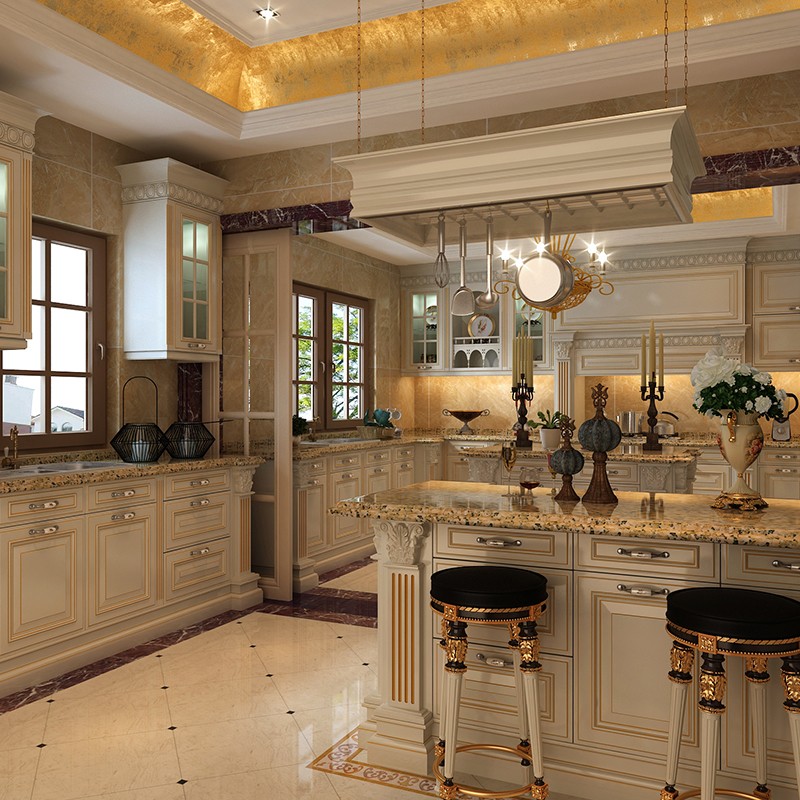
Craftsmanship: Exquisite craftsmanship is the quality guarantee of high-end cabinets
The craftsmanship determines the sophistication and service life of the cabinets. High-end cabinets usually use advanced manufacturing processes and strict quality control to ensure the high precision, high durability and high aesthetics of the products.
1. Precise processing technology
High-precision CNC equipment is used for cutting and grinding during the production process of high-end kitchen cabinets to ensure that the size of each board is accurate. Modern processing technology can also ensure the uniformity and consistency of the cabinet surface treatment to avoid roughness or unevenness.
In addition, the splicing and installation of cabinets also require strict process control. High-end cabinets usually undergo multiple trial installations before leaving the factory to ensure that every accessory and component can be perfectly connected.
2. Complex surface treatment process
The surface treatment process of high-end cabinets is more complex and diverse, such as painting, edge banding, polishing, etc. These processes can not only improve the aesthetics of the cabinet, but also enhance its wear resistance and moisture resistance. For example, the matte paint treatment commonly used in high-end cabinets not only feels delicate, but also prevents fingerprints and stains from remaining, keeping the cabinet clean and bright for a long time.
3. Strict quality inspection standards
High-end cabinets undergo multiple quality inspections during the production process to ensure that each product meets strict standards. Generally, the quality inspection standards of brand cabinets include the formaldehyde emission of the board, the wear resistance of the countertop, and the durability of the hardware. Only cabinets that have passed these rigorous tests can ensure their safety and reliability in actual use.
Functionality: Practicality and technological sense of high-end cabinets
Functionality is another major feature of high-end kitchen cabinets. It is not just a storage tool, but also can make kitchen operations more convenient and comfortable through a variety of intelligent and humanized designs.
1. Reasonable space allocation
The internal structure design of high-end kitchen cabinets has been carefully laid out to ensure that every space can be maximized. For example, the drawer is usually equipped with adjustable partitions or partitions so that users can classify and store items according to the size and type. At the same time, the design of corner cabinets is also more ingenious, usually using rotating racks or pull-out baskets to avoid the waste of dead space.
2. Intelligent technology application
With the development of technology, more and more high-end cabinets are beginning to incorporate intelligent elements. For example, cabinets with electric door opening and closing functions can automatically open or close the cabinet door with just a light touch or gesture sensing; cabinets with induction lights can automatically light up at night or in low light environments, making it easier for users to find what they need. In addition, some high-end cabinets also integrate intelligent temperature control or humidity monitoring functions to ensure the safety of food storage.
3. Humanized design details
High-end cabinets are designed with full consideration of the actual needs and usage habits of users. For example, the height of the cabinet will be adjusted according to the height of the user to ensure that there is no need to bend or reach excessively when operating. At the same time, the buffer design of drawers and cabinet doors can effectively reduce noise and improve the comfort during use.
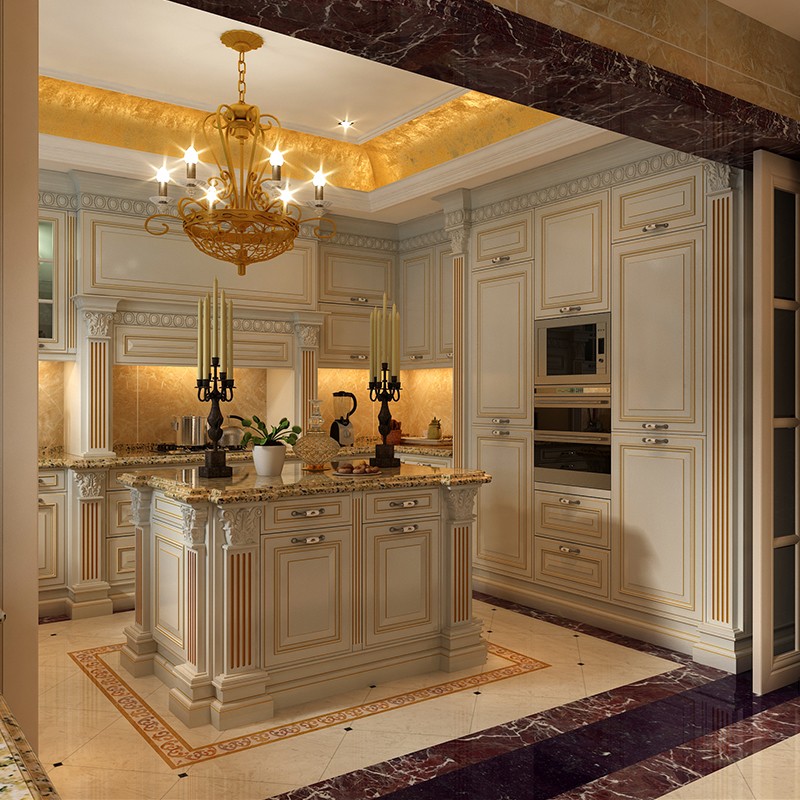
User experience: the ultimate embodiment of high-end cabinets
The core of high-end kitchen cabinets is not only the material, design, craftsmanship and function, but more importantly the overall user experience. Only when the cabinet can bring convenience, comfort and beauty in use can it be called a true high-end product.
1. Comfortable operating experience
High-end cabinets use ergonomic design to ensure that users feel comfortable and at ease in every operation in the kitchen. For example, the opening angle of the cabinet door, the sliding resistance of the drawer, and the height design of the countertop will be precisely calculated to avoid inconvenience in operation.
2. Long-term stable performance
High-end cabinets not only perform well when used for the first time, but also maintain their stable performance and beauty after years of use. High-quality hardware and materials ensure the durability of the cabinets, and they will not be easily deformed or damaged even in a high temperature and high humidity environment such as the kitchen.
3. After-sales service and guarantee
High-end cabinet brands usually provide comprehensive after-sales service and quality assurance, such as multi-year warranty, regular maintenance, etc. These services can not only make users feel more at ease during use, but also extend the service life of the cabinets.

